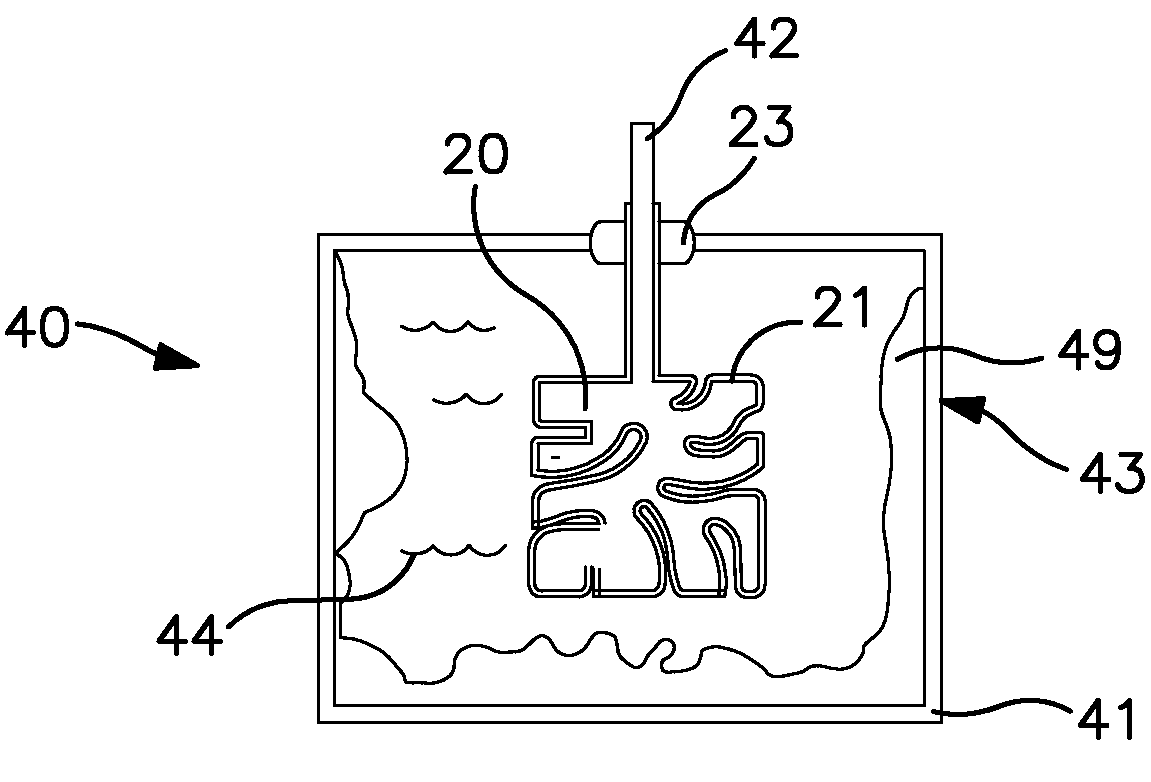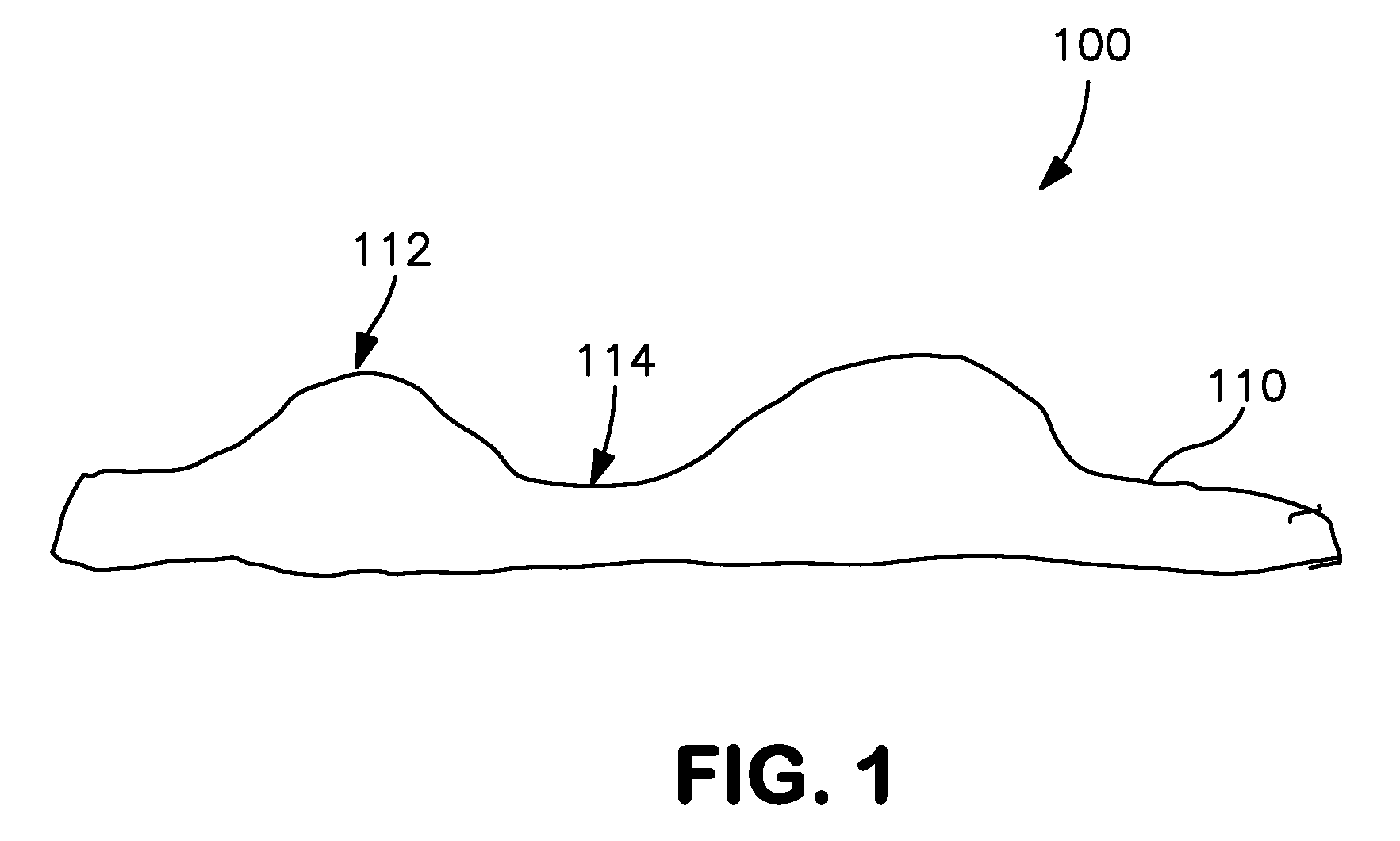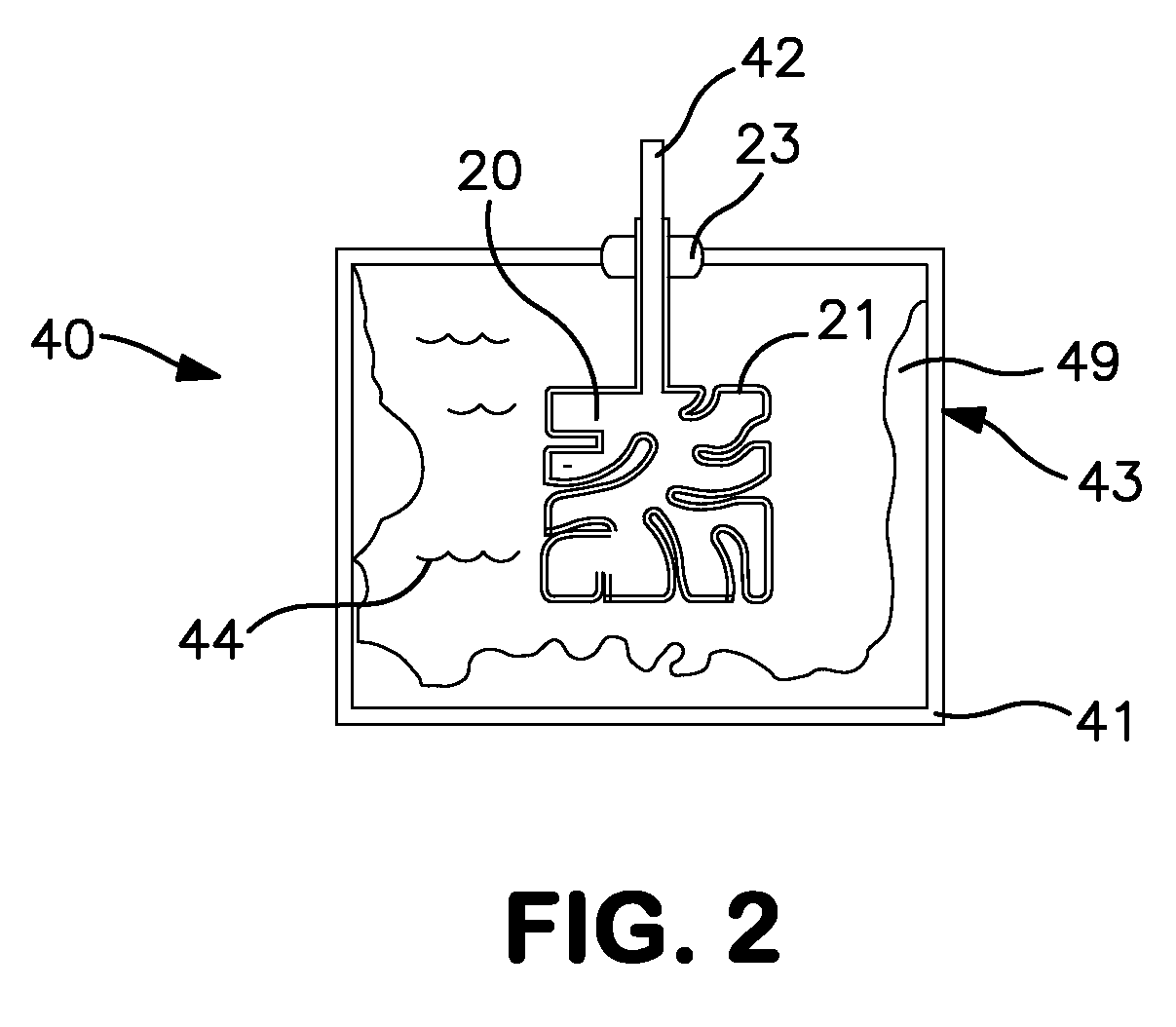Cathode for Use in a Wet Capacitor
a technology of cathode and wet capacitor, which is applied in the direction of electrochemical machining apparatus, metal-working apparatus, metallic material coating process, etc., can solve the problems of low unit cell voltage of this type of capacitor and the inability to easily remove the coating
- Summary
- Abstract
- Description
- Claims
- Application Information
AI Technical Summary
Benefits of technology
Problems solved by technology
Method used
Image
Examples
example 1
[0045]The ability to form a tantalum electrode in accordance with the present invention was demonstrated. Initially, a tantalum foil (surface area of 1 square centimeter) was initially spot welded to a tantalum wire and degreased in an aqueous solution of an Alconox detergent (10 wt. % in deionized water) for 30 minutes in an ultrasonication bath. The tantalum foil was then rinsed with deionized water and dried at ambient temperature. Thereafter, the tantalum wire was spot welded to a stainless steel bar for holding the tantalum foil through an alligator clip. The tantalum foil was placed in an electrolyte solution containing 60 milliliters of 1M H3PO4 and 40 milliliters 1M H2SO4 in a 100-milliliter beaker. An electrochemical cell was created using the tantalum foil prepared above as the anode and a piece of platinum wire as the cathode. The connection to the cathode was attached to the stainless steel bar that was spot welded to the tantalum wire so that the distance between the pl...
example 2
[0046]A tantalum electrode was formed as described in Example 1, except that the electrolyte solution contained 50 milliliters 1M H3PO4 and 50 milliliters 1M H2SO4, and the distance between the platinum wire and tantalum foil was 0.5 centimeter. The duration of the experiment was 10 minutes during which the temperature was increased from 29° C. to 50° C. in the vicinity of the tantalum foil. SEM photographs of the resulting electrode are shown in FIGS. 2-5. The area of one elevated region was estimated using FIG. 4. More specifically, the area was calculated using the following equation for cylinders: Area=πr2+2πh, where r (base radius) was estimated as 2 micrometers and h (height) was estimated as 1.3 micrometers. From the above, it was determined that the elevated region had an approximate area of 28.9 μm2.
PUM
| Property | Measurement | Unit |
|---|---|---|
| height | aaaaa | aaaaa |
| height | aaaaa | aaaaa |
| thickness | aaaaa | aaaaa |
Abstract
Description
Claims
Application Information
 Login to View More
Login to View More - R&D
- Intellectual Property
- Life Sciences
- Materials
- Tech Scout
- Unparalleled Data Quality
- Higher Quality Content
- 60% Fewer Hallucinations
Browse by: Latest US Patents, China's latest patents, Technical Efficacy Thesaurus, Application Domain, Technology Topic, Popular Technical Reports.
© 2025 PatSnap. All rights reserved.Legal|Privacy policy|Modern Slavery Act Transparency Statement|Sitemap|About US| Contact US: help@patsnap.com



